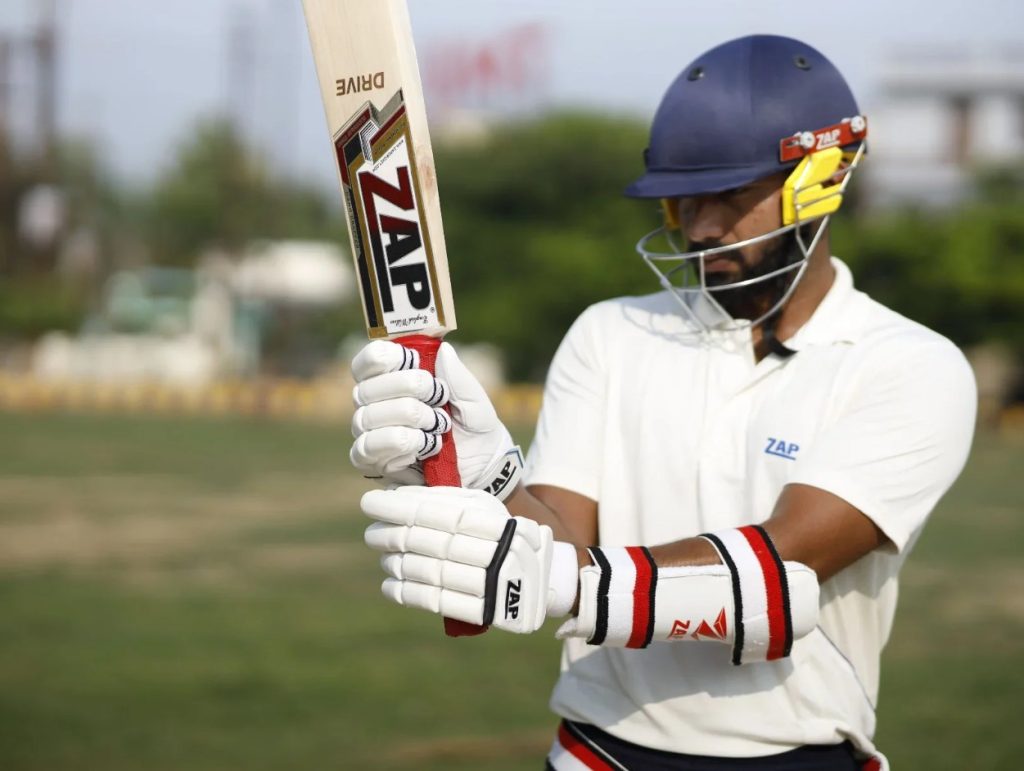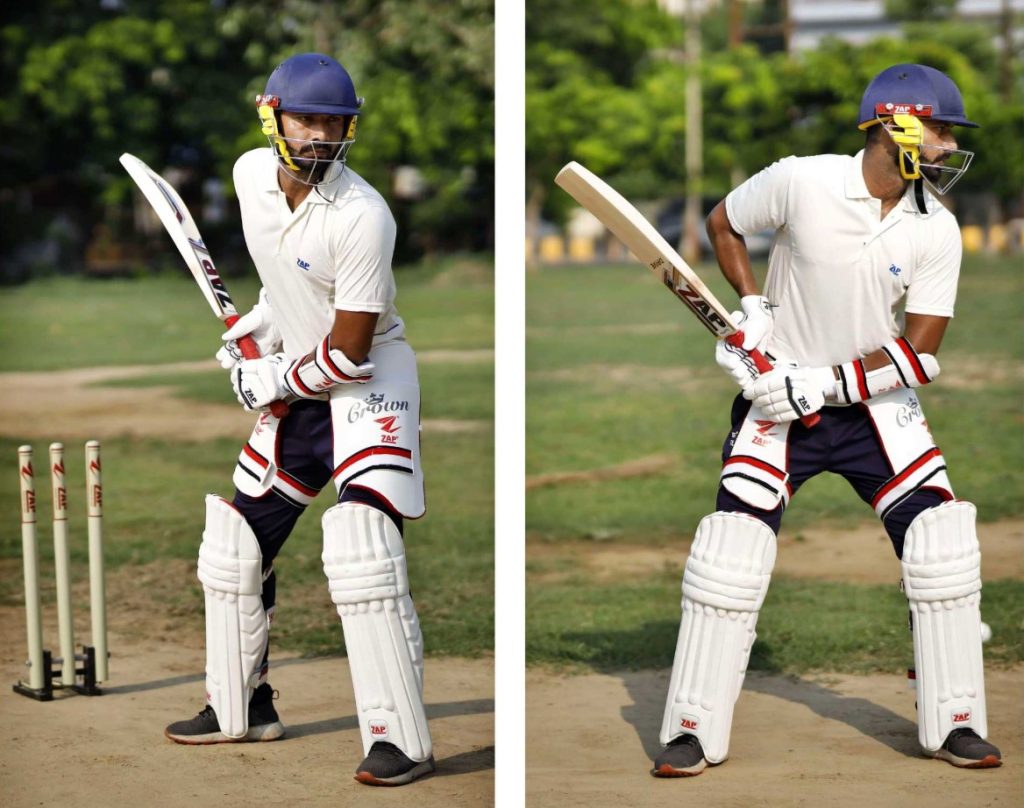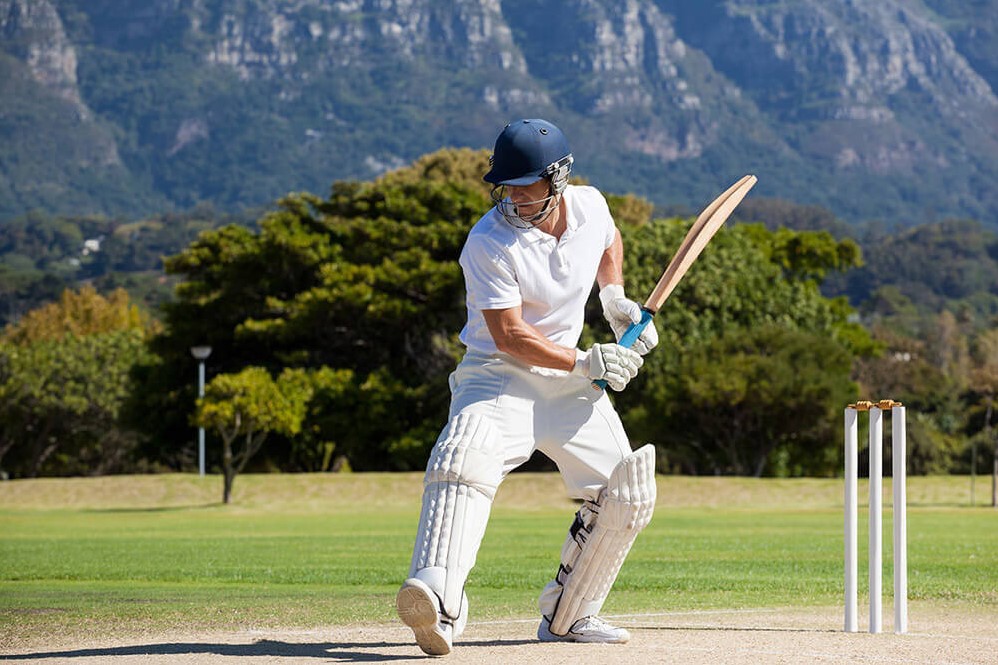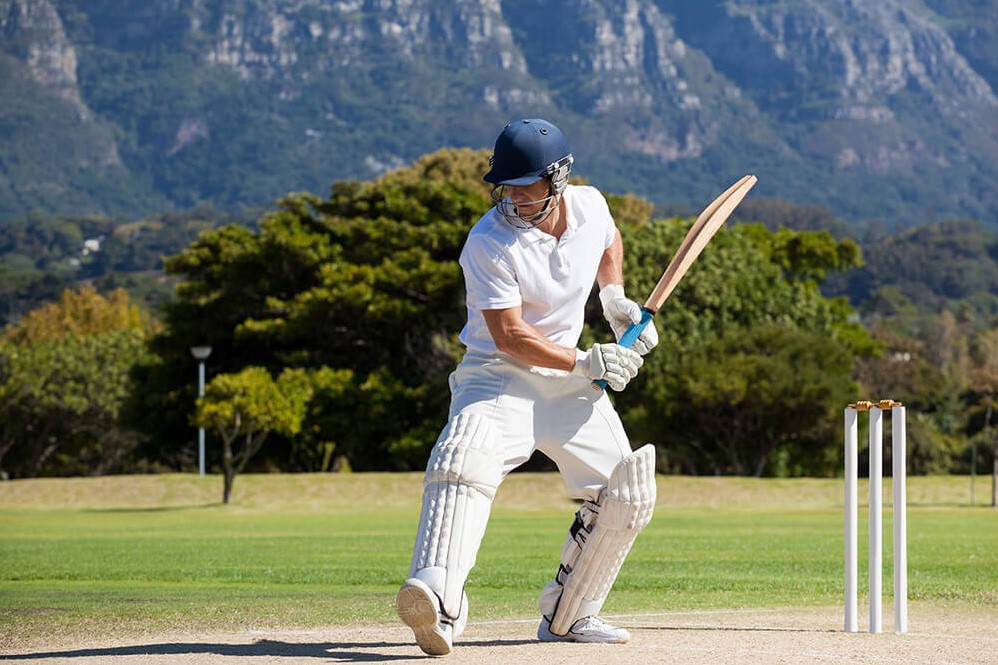Cricket is a game of skill, precision, and technique. Whether you’re a beginner or a seasoned player, the correct grip on a cricket bat is essential for maximizing your potential as a batsman. Holding the bat correctly not only ensures better control over your shots but also helps in preventing injuries and improving your performance. A proper grip enables you to play a wide range of shots with ease, whether it’s a defensive block or a powerful cover drive.
In this article, we will dive into the key aspects of how to hold a cricket bat correctly. We’ll explore the different types of grips, the steps to mastering the grip, and the importance of each adjustment. Let’s begin by understanding the anatomy of the grip and its role in batting.
1. The Anatomy Of A Cricket Bat Grip

A cricket bat grip, like any other aspect of the game, is crucial for executing shots effectively. The grip refers to how the hands are positioned on the handle of the bat. A correct grip helps a batsman maintain control, power, and stability, whether facing fast bowlers or spinners.
There are two primary types of grips in cricket:
- The V Grip (also known as the “Basic Grip” or “Conventional Grip”)
- The Split Grip
Each grip has its own advantages, and different batsmen may choose one over the other based on personal comfort, style, and the type of shots they intend to play.
2. The V Grip (Basic Grip)
The V grip is the most commonly used grip among cricketers and is often referred to as the “standard grip.” It allows you to maintain good control over the bat and is versatile for both defensive and attacking shots.
How To Hold The Bat With The V Grip:
Positioning the Hands: Place your bottom hand on the lower part of the handle, ensuring that the top part of the handle (near the knob) rests in your palm.
The Top Hand: Place your top hand (the non-dominant hand) on the upper part of the handle. This hand should be further up the handle towards the blade of the bat.
Forming the “V”: Your top hand and bottom hand should form a “V” shape when held together. The bottom of the “V” should align with the spine of the bat.
Firmness: Both hands should maintain a relaxed but firm grip on the bat. The grip should be firm enough to control the bat but relaxed enough to allow freedom of movement.
Advantages of the V Grip:
- Provides excellent control over the bat, allowing for precise shots.
- Facilitates a wide range of shots, from drives to cuts and pulls.
- Suitable for most players, regardless of whether they are beginners or professionals.
3. The Split Grip

The split grip is a less common but effective grip, often used by players who like to generate more power and manipulate the bat during aggressive shots.
How To Hold The Bat With The Split Grip:
Positioning the Hands: Place the bottom hand lower on the handle, around the bottom of the grip or just above the knob.
Separation of Hands: The key feature of the split grip is that the hands are slightly separated on the handle. The top hand will be placed slightly higher on the handle.
The Hands’ Relationship: Unlike the V grip, where the hands are held close together, in the split grip, there is a small gap between the hands, creating a more relaxed feel and potentially offering more flexibility when playing powerful shots.
Advantages of the Split Grip:
- Helps in generating more power for big shots, such as lofted drives and pulls.
- Can aid in executing shots in a freer manner.
- Offers a more relaxed feeling for players who favor aggressive batting styles.
Key Adjustments To Master The Grip
While choosing the right grip is essential, mastering the grip involves making a few key adjustments based on the situation, playing style, and comfort.
1. Hand Placement
- The hands should not be too far apart or too close. The ideal distance between the hands depends on the player’s comfort and style. Most players find that a slightly wider grip provides more stability and control, while others prefer a closer grip for finesse and touch.
2. Finger Pressure

- The pressure on the fingers should be balanced. You don’t want to squeeze the bat too tightly, as this can cause tension and reduce the fluidity of your shots. A relaxed grip gives the bat more freedom of movement and helps you play shots more effectively. However, the bat should still be secure in your hands to avoid losing control.
3. Position of the Thumb
- Your thumb should rest comfortably on the back of the bat handle. The thumb should not be positioned too tightly, as this could restrict your wrist’s movement and shot execution.
4. Wrist Flexibility
- The wrists should be flexible to allow for better timing and control of the bat. A relaxed grip allows the wrists to move freely, which is crucial for playing shots like the cut, pull, and flick. Keeping your wrists active helps in executing shots with greater precision.
5. Comfort and Control
- The grip should always be adapted to suit your comfort. A grip that feels unnatural or uncomfortable may negatively impact your shot-making. Players often make minor adjustments to the grip for different formats or conditions.
The Importance Of A Batting Grip
A proper grip plays a crucial role in a batsman’s performance. Here’s why it’s so important:
| Aspect | Importance |
|---|---|
| Control | The correct grip allows better control over shot execution. |
| Comfort | A comfortable grip helps reduce fatigue and hand strain. |
| Shot Variety | A well-gripped bat allows you to play a wide range of shots. |
| Injury Prevention | Proper gripping technique reduces the risk of hand injuries. |
| Bat Swing and Timing | A proper grip helps in a smoother bat swing, improving timing. |
A strong, comfortable grip provides a better feel of the bat and allows the batsman to react to deliveries quickly and effectively. It also ensures that shots are played with more precision, whether playing along the ground or hitting in the air.
Grip For Different Formats

Different formats require slightly adjusted grips. Here’s a quick guide on how the grip might change based on the format:
| Format | Grip Adjustment |
|---|---|
| Test Cricket | A slightly firmer grip for better control, particularly for defensive shots. |
| One-Day Internationals (ODIs) | A medium grip that balances control and power for both aggressive and defensive shots. |
| T20 Cricket | A looser, more relaxed grip to generate quicker bat speed for aggressive shots. |
Common Mistakes To Avoid
When learning how to hold the bat, it’s easy to develop bad habits. Here are some common mistakes to avoid:
Holding the bat too tightly: Over-gripping the bat can cause tension and restrict the fluidity of your shots.
Incorrect hand placement: Placing the hands too far apart or too close together can make shots difficult to execute and affect your balance.
Rigid wrists: A stiff wrist will reduce the effectiveness of shots that require fine control or wrist movement, such as flicks or cuts.
Mastering the correct grip on your cricket bat is a fundamental skill that every cricketer should work on. Whether you choose the V grip or the split grip, finding the one that suits your playing style and feels comfortable is key to improving your batting. A good grip allows you to control the bat better, play a variety of shots, and protect yourself from potential injuries.

Remember, the grip is just one element of a batsman’s technique, but it’s one of the most important. Once you’ve found the right grip and feel comfortable with it, your batting performance will undoubtedly improve, making you a more consistent and effective player. Keep practicing, and master the art of holding the bat correctly to take your game to the next level.
Also Read: Mastering The Art Of Hitting Big Sixes In Cricket













